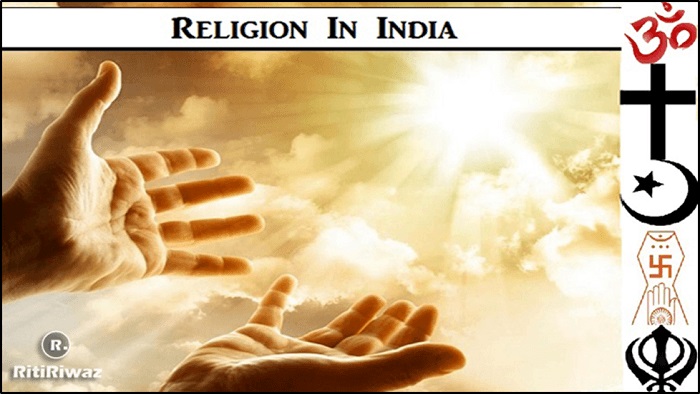Indian Religions | Religions in India

India known as the land of spirituality and philosophy was the birthplace of some religions, which even exist today in the world. The most dominant religion in India today is Hinduism. Around 500 BC two other religions developed in India, namely, Buddhism and Jainism. One comparatively new religion in India is Sikhism and it was established in the 15th century. The largest non-Indian religion is Islam.
Religious diversity and religious tolerance are both established in the country by the law and custom; the Constitution of India has declared the right to freedom of religion to be a fundamental right.
Hinduism
Hinduism is the oldest religion in the world. Hinduism is the world’s third-largest religion after Christianity and Islam. Hinduism is the dominant religion in India, where Hindus form about 84 percent of the total population. Hinduism is also known as “Sanatan Dharma” or the everlasting religion.
Buddhism
At present Buddhism is one of the major world religions. The philosophy of Buddhism is based on the teachings of Lord Buddha, Siddhartha Gautama (563 and 483 BC), a royal prince of Kapilvastu, India. After originating in India, Buddhism spread throughout Central Asia, Sri Lanka, Tibet, Southeast Asia, as well as the East Asian countries of China, Mongolia, Korea, Japan, and Vietnam.
Christians
Christianity is one of the prominent religions in India. At present, there are about 25 million Christians in India. It is interesting to note that the Christian population in India is more than the entire population of Australia and New Zealand or the total population of a number of countries in Europe.
Islam
One of the prominent religions of India, Islam forms about 12 percent of India’s population. Though India’s contact with Islam had begun much earlier, the real push came in the 8th century when the province of Sindh was conquered. Though the Muslims form only 12 percent of the total population of India the influence of Islam on Indian society is much stronger.
Jainism
Jains form less than one percent of the Indian population. For centuries, Jains are famous as a community of traders and merchants. The states of Gujarat and Rajasthan have the highest concentration of the Jain population in India. The Jain religion is traced to Vardhamana Mahavira (The Great Hero 599-527 B.C.).
Sikhism
Sikhs form about 2 percent of the Indian population. In comparison to other religions, Sikhism is a younger religion. The word ‘Sikh‘ means a disciple and thus Sikhism is essentially the path of discipleship. The true Sikh remains unattached to worldly things.
Zoroastrianism
A small religious community, which exists mostly in Mumbai, is Zoroastrianism. The follower is called Parsi because the religion arrived in India from Persia. This religion was established by Zarathustra in the 6th or 7th century BC. The followers of this religion exiled from Iran in the 7th century AD. because of religious persecutions by the Muslims. They arrived in the Gujarat region of India. The Parsis believe in the existence of one invisible God.






